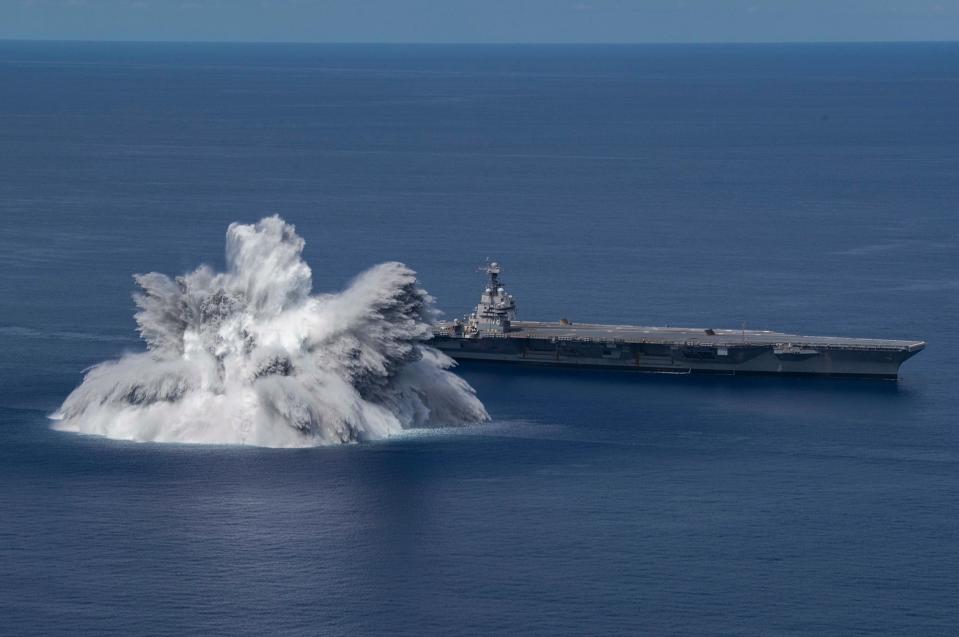Watch US Navy trial causing earthquake after blasting 18 tonnes of explosives in Atlantic

US Navy have released videos of a shock trial it conducted on its newest aircraft carrier USS Gerald R Ford on Friday, which triggered a 3.9 magnitude earthquake at sea.
The "full ship shock trial" (FSST) was conducted by detonating about 18 tonnes (40,000 pounds) of explosives within metres of the ship sailing in the Atlantic, according to a statement.
It was the first of the three scheduled in-water blasts by the navy, kicking off the full ship shock trials on the nuclear-powered carrier to determine whether it can withstand an enemy hit during combat.
The US Geological Survey recorded the powerful blast with a 3.9 magnitude earthquake about 100 miles off the Florida coast at 4pm on Friday, according to USNI news.
The footage of the trial showed gigantic bursts of water erupting from the ocean as thousands of pounds of explosives were detonated near the carrier. The super carrier remained unscathed by the powerful blast as the navy called it a “successful” trial.
The navy said in the statement that the trials are being conducted “within a narrow schedule that complies with environmental mitigation requirements, respecting known migration patterns of marine life in the test area.”
Ever wonder what a 40,000 pound explosive looks like from the bridge wing of a @USNavy aircraft carrier?
Watch footage from #USSGeraldRFord's first explosive event of Full Ship Shock Trials and find out! 🤯#ThisIsFordClass #WeAreNavalAviation #Warship78 pic.twitter.com/2kbeEkF0g1— USS Gerald R. Ford (CVN 78) (@Warship_78) June 20, 2021
“The first-in-class aircraft carrier was designed using advanced computer modelling methods, testing, and analysis to ensure the ship is hardened to withstand battle conditions, and these shock trials provide data used in validating the shock hardness of the ship,” it added.
After completion of FSST later this summer, the carrier will enter "planned incremental availability for six months of modernisation, maintenance, and repairs" before its maiden deployment.

The carrier is 333m long, 77m high and has a displacement of 100,000 tonnes full load while comprising two nuclear reactors and four shafts.
The full ship shock trials were executed first time on an aircraft carrier in 34 years, according to US Navy, since the shock trial on USS Theodore Roosevelt (CVN 71) in 1987. This was also the first FSST on any class of ship since 2016.
Read More
AI-powered Mayflower, beset with glitch, returns to England

 Yahoo Movies
Yahoo Movies 